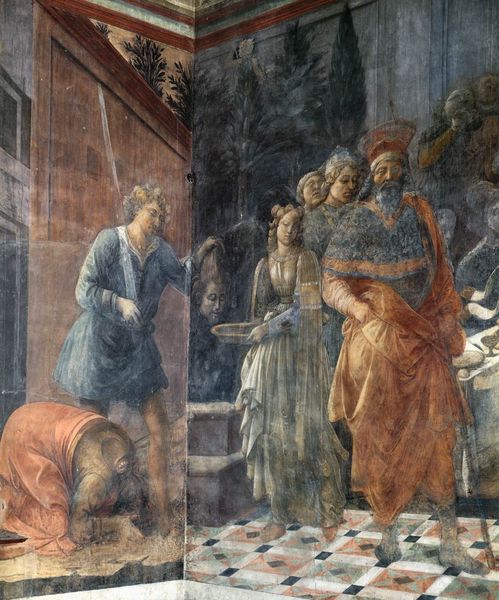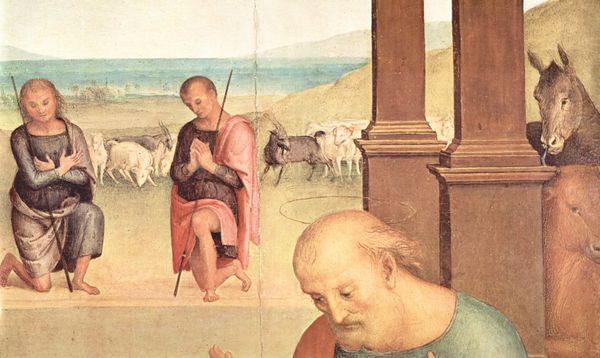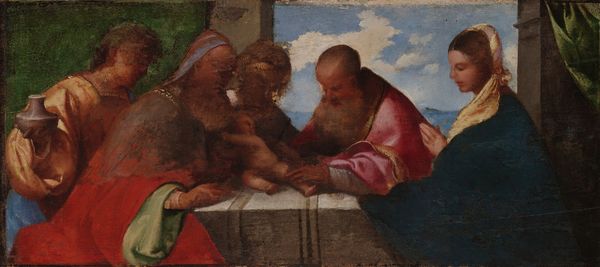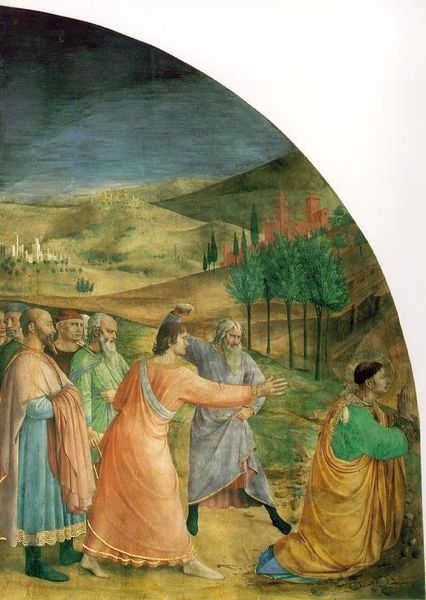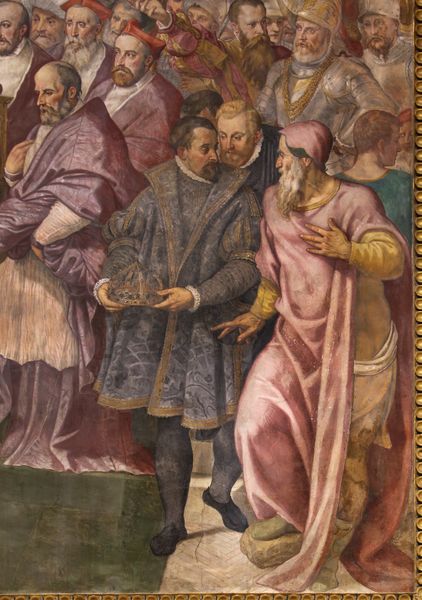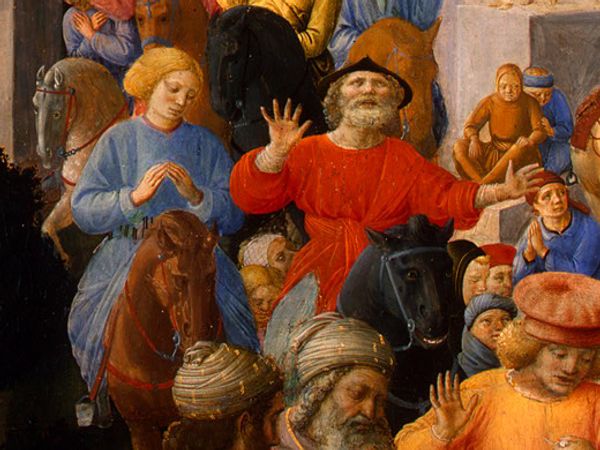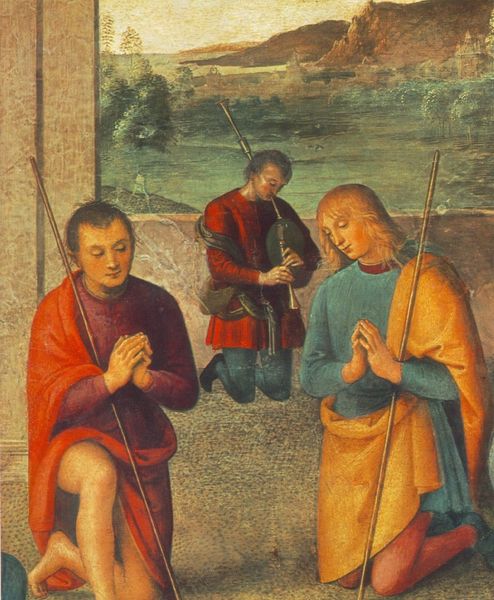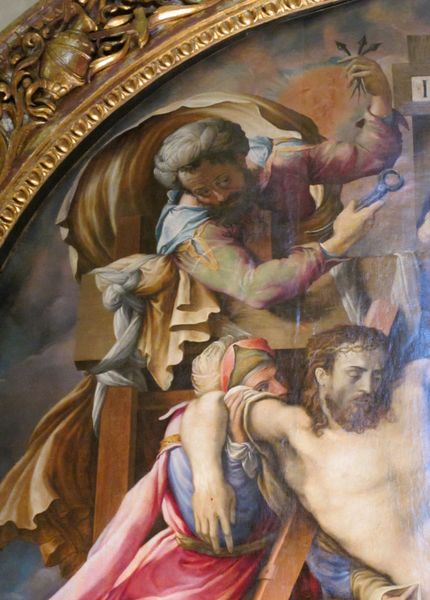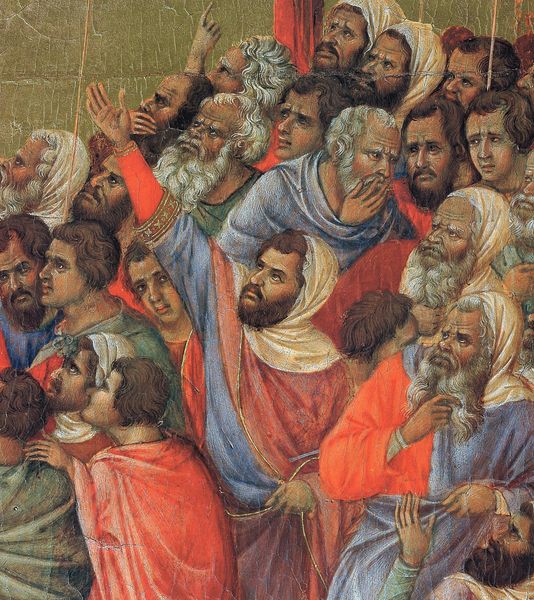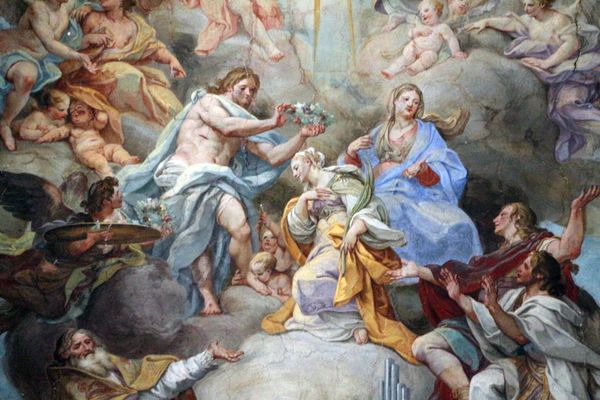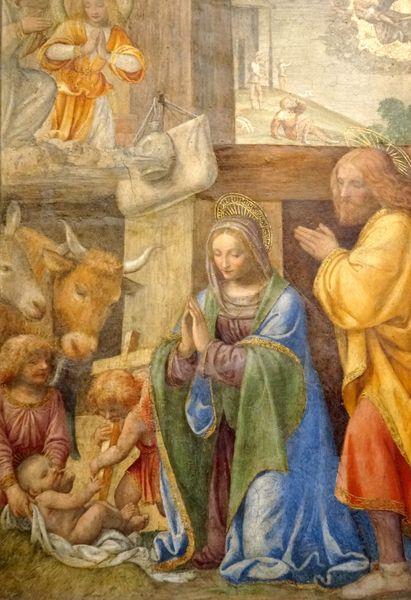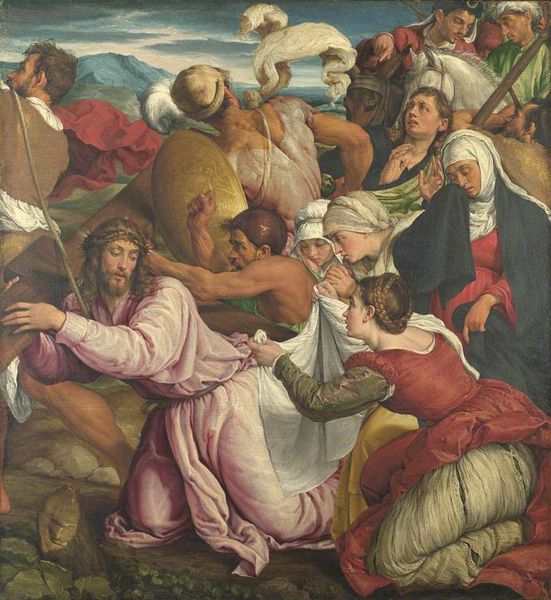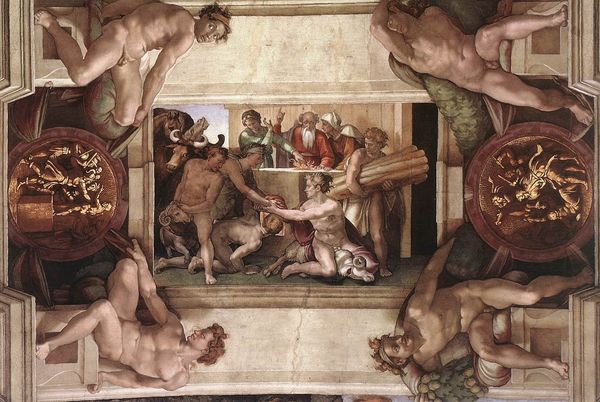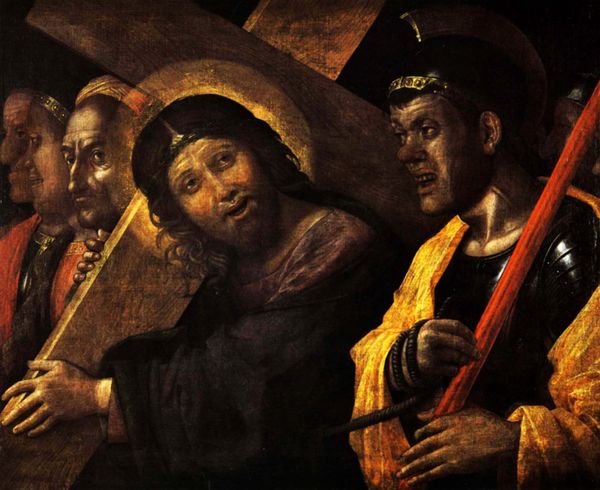
Copyright: Public domain
Editor: So this is a detail from Matthias Grünewald's Heller Altarpiece, painted around 1509 using oil paint. The way the figures are crowded together makes it feel quite intense. What catches your eye? Curator: The most compelling aspect is the complex negotiation of power dynamics portrayed. This detail, plucked from the central panel, shows not only religious figures but also donors – likely members of the Heller family. Editor: How does that dynamic play out visually? Curator: Note how Grünewald situates them: Are the Heller family members integrated seamlessly into the sacred scene, or are they positioned as external observers? Does their inclusion elevate them or serve to humanize the divine figures through association? Their expressions too – contemplation, grief, perhaps a touch of self-importance? It's not merely a devotional image; it's a statement about status, piety, and patronage within the social fabric of Renaissance society. Editor: That makes a lot of sense. I hadn't considered the patrons as part of the picture. It almost makes the figures feel less iconic, and more grounded. Curator: Exactly. Grünewald’s visual decisions create a bridge, or perhaps a tension, between the earthly and the divine, reflecting the church’s ongoing negotiations with its wealthy patrons. Considering the historical context illuminates how this artwork functioned both religiously and politically. Editor: I definitely see the layers you're talking about. I learned so much more about the significance of the relationship between religious figures and earthly patrons. Curator: And I was reminded of the potent agency embedded within acts of artistic patronage. It's a valuable lens through which to appreciate the multifaceted role art plays in shaping societal narratives.
Comments
No comments
Be the first to comment and join the conversation on the ultimate creative platform.
